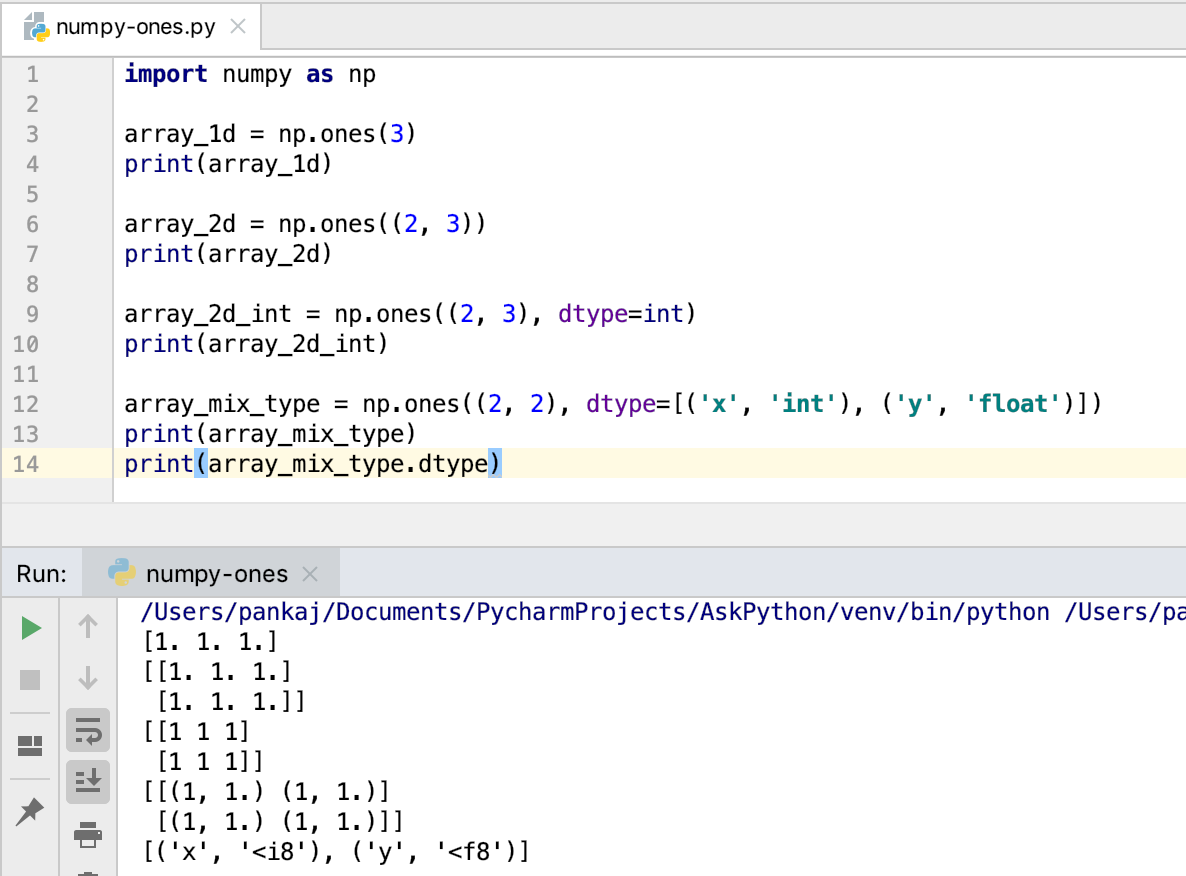Pythonでのnumpy.ones()
Pythonのnumpy.ones()関数は、与えられた形状とデータ型の新しい配列を返します。要素の値は1に設定されています。この関数は、numpy zeros()関数と非常に似ています。
numpy.ones()関数の引数
「numpy.ones()」関数の構文は次のようになります。
ones(shape, dtype=None, order='C')
- The shape is an int or tuple of ints to define the size of the array. If we just specify an int variable, a one-dimensional array will be returned. For a tuple of ints, the array of given shape will be returned.
- The dtype is an optional parameter with default value as a float. It’s used to specify the data type of the array, for example, int.
- The order defines the whether to store multi-dimensional array in row-major (C-style) or column-major (Fortran-style) order in memory.
Pythonのnumpy.ones()の例
NumPyのones()関数を使用して、配列を作成するいくつかの例を見てみましょう。
1. 全ての要素が1の一次元配列を作成する
import numpy as np
array_1d = np.ones(3)
print(array_1d)
出力:
[1. 1. 1.]
要素はデフォルトでデータ型がfloatとなっていることに注意してください。だから配列内の数字は1.です。
2. マルチディメンショナル配列の作成
import numpy as np
array_2d = np.ones((2, 3))
print(array_2d)
出力:1つのオプションだけが必要です。
[[1. 1. 1.]
[1. 1. 1.]]
Intデータ型を使用したNumPyのones配列
import numpy as np
array_2d_int = np.ones((2, 3), dtype=int)
print(array_2d_int)
「出力」
[[1 1 1]
[1 1 1]]
4. タプルデータ型および要素が1のNumPy配列
私たちは、配列の要素をタプルとして指定し、そのデータ型も指定することができます。
import numpy as np
array_mix_type = np.ones((2, 2), dtype=[('x', 'int'), ('y', 'float')])
print(array_mix_type)
print(array_mix_type.dtype)
出力:
[[(1, 1.) (1, 1.)]
[(1, 1.) (1, 1.)]]
[('x', '<i8'), ('y', '<f8')]

参照:APIドキュメント

